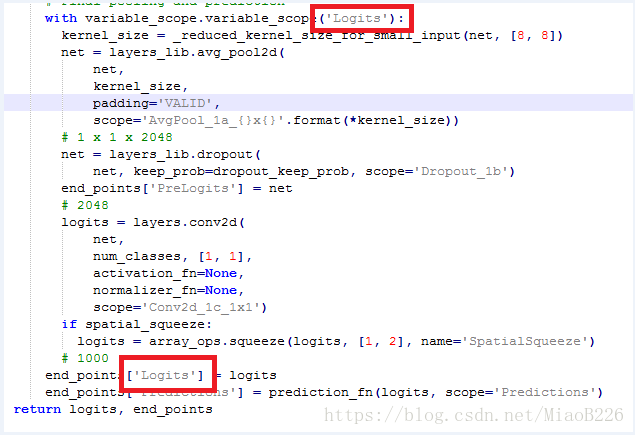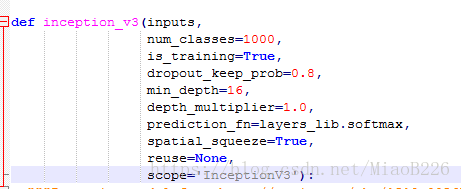TensorFlow从入门到放弃(二)——基于InceptionV3的迁移学习以及图像特征的提取
1. flower数据集
下载地址:http://download.tensorflow.org/example_images/flower_photos.tgz
共五种花的图片
2. 图片处理
将图片划分为train、val、test三个子集并提取图片特征。这个过程有点儿漫长请耐心等待。。。。。。
import glob
import os.path
import numpy as np
import tensorflow as tf
from tensorflow.python.platform import gfile
# 数据集的路径
INPUT_DATA = r'E:\PythonSpace\finetune_NET\flower_photos'
# 分割好的数据集
OUT_FILE = r'E:\PythonSpace\finetune_NET\flower_processed_data.npy'
# 测试数据和验证数据所占的比例为10%
VALIDATION_PERCENTAGE = 10
TEST_PERCENTAGE = 10
def create_image_lists(sess, testing_percentage, validation_percentage):
# 读取数据集文件夹内的几个文件夹
sub_dirs = [x[0] for x in os.walk(INPUT_DATA)]
is_root_dir = True
# 初始化各个数据集
training_images = []
training_labels = []
testing_images = []
testing_labels = []
validation_images = []
validation_labels = []
current_label = 0
current_image = 0
# 读取所有的子目录
for sub_dir in sub_dirs:
if is_root_dir:
is_root_dir = False
continue
extension = 'jpg'
file_list = []
# 获取图片所属的类别文件夹
dir_name = os.path.basename(sub_dir)
# 读取文件夹下*.jpg的文件名
file_glob = os.path.join(INPUT_DATA, dir_name, '*.' + extension)
# 读取名字为上面类型的文件的名字,保存到列表中
file_list.extend(glob.glob(file_glob))
for file_name in file_list:
current_image = current_image + 1
print(current_image)
# 利用tensorflow的方法以二进制的格式读取图像
image_raw_data = gfile.FastGFile(file_name, 'rb').read()
# 对上面的二进制图像进行解码
image = tf.image.decode_jpeg(image_raw_data)
if image.dtype != tf.float32:
image = tf.image.convert_image_dtype(image, dtype=tf.float32)
# resize图片大小
image = tf.image.resize_images(image,[229,229])
image_value = sess.run(image)
# 随机划分数据集
# 随机生成一个0-100的数
chance = np.random.randint(100)
# 根据比例划分数据集
if chance < validation_percentage:
validation_images.append(image_value)
validation_labels.append(current_label)
elif chance < (validation_percentage + testing_percentage):
testing_images.append(image_value)
testing_labels.append(current_label)
else:
training_images.append(image_value)
training_labels.append(current_label)
current_label += 1
# 打乱训练集数据
state = np.random.get_state()
np.random.shuffle(training_images)
np.random.set_state(state)
np.random.shuffle(training_labels)
return np.asarray([training_images, training_labels,
validation_images, validation_labels,
testing_images, testing_labels])
# 定义主函数
def main():
with tf.Session() as sess:
processed_data = create_image_lists(sess, TEST_PERCENTAGE, VALIDATION_PERCENTAGE)
np.save(OUT_FILE, processed_data)
if __name__ == '__main__':
main()
3. 下载预训练好的inception-v3网络模型权重文件
下载地址:http://download.tensorflow.org/models/inception_v3_2016_08_28.tar.gz
4. finetune_NET.py
import glob
import os.path
import numpy as np
import tensorflow as tf
from tensorflow.python.platform import gfile
import tensorflow.contrib.slim as slim
# 加载inception_v3模型
import tensorflow.contrib.slim.python.slim.nets.inception_v3 as inception_v3
# 导入处理之后的数据文件
INPUT_DATA = r'E:\PythonSpace\finetune_NET\flower_processed_data.npy'
# 定义finetune后变量存储的位置
TRAIN_FILE = r'E:\PythonSpace\finetune_NET\model'
# 预训练的model文件
CKPT_FILE = r'E:\PythonSpace\finetune_NET\inception_v3.ckpt'
# 定义训练中使用的参数
LEARNING_RATE = 0.0001
# 定义训练轮数,每轮训练要跑完所有训练图片
STEPS = 300
# 程序前向运行每次有多少张图片参与
BATCH = 30
# 类别数
N_CLASSES = 5
# finetune时,只是finetune最后的全连接层
CHECKPOINT_EXCLUDE_SCOPES = 'InceptionV3/Logits, InceptionV3/AuxLogits'
TRAINABLE_SCOPES = 'InceptionV3/Logits, InceptionV3/AuxLogits'
# 获取所有需要从训练好的模型中导入数据
def get_tuned_variables():
exclusions = [scope.strip() for scope in CHECKPOINT_EXCLUDE_SCOPES.split(',')]
# 用于存储需要加载参数的名称
variables_to_restore = []
for var in slim.get_model_variables():
excluded = False
for exclusion in exclusions:
if var.op.name.startswith(exclusion):
excluded = True
break
if not excluded:
variables_to_restore.append(var)
return variables_to_restore
# 初始化需要训练的两个层的变量
def get_trainable_variables():
scopes = [scope.strip() for scope in TRAINABLE_SCOPES.split(',')]
variables_to_train = []
for scope in scopes:
variables = tf.get_collection(tf.GraphKeys.TRAINABLE_VARIABLES, scope)
variables_to_train.extend(variables)
return variables_to_train
def main(argv=None):
# 加载预处理的数据
processed_data = np.load(INPUT_DATA)
training_images = processed_data[0]
n_training_example = len(training_images)
training_labels = processed_data[1]
validation_images = processed_data[2]
validation_labels = processed_data[3]
testing_images = processed_data[4]
testing_labels = processed_data[5]
print ("%d training examples, %d validation examples and %d"
"testing examples."%(n_training_example, len(validation_labels),
len(testing_labels)))
# 定义网络的输入
images = tf.placeholder(tf.float32, [None, 229, 229, 3], name="input_images")
labels = tf.placeholder(tf.int64, [None], name="labels")
# 网络的前向运行
with slim.arg_scope(inception_v3.inception_v3_arg_scope()):
logits, _ = inception_v3.inception_v3(images, num_classes=N_CLASSES)
# 获取需要训练的变量
trainable_variables = get_trainable_variables()
# 定义交叉熵损失
tf.losses.softmax_cross_entropy(tf.one_hot(labels, N_CLASSES), logits, weights=1.0)
# 优化损失函数
train_step = tf.train.RMSPropOptimizer(LEARNING_RATE).minimize(tf.losses.get_total_loss())
# 计算正确率
with tf.name_scope("evaluation"):
correct_prediction = tf.equal(tf.argmax(logits,1), labels)
evaluation_step = tf.reduce_mean(tf.cast(correct_prediction, tf.float32))
# 导入预训练好的权重
load_fn = slim.assign_from_checkpoint_fn(CKPT_FILE, get_tuned_variables(), ignore_missing_vars=True)
# 用于存储finetune后的权重
saver = tf.train.Saver()
with tf.Session() as sess:
# 初始化没有加载进来的变量
init = tf.global_variables_initializer()
sess.run(init)
print ("loading tuned variables from %s" % CKPT_FILE)
load_fn(sess)
start = 0
end = BATCH
for i in range(STEPS):
# 开始训练
sess.run(train_step, feed_dict={
images: training_images[start:end],
labels: training_labels[start:end]
})
if i%30 == 0 or i+1 == STEPS:
# 这里存储权重时一定要带后面的那个.ckpt
model_path = os.path.join(TRAIN_FILE, 'model_step' + str(i + 1) + '.ckpt')
# 保存权重
saver.save(sess, model_path)
validation_accuracy = sess.run(evaluation_step, feed_dict={images: validation_images,
labels: validation_labels})
print('Step %d: Validation accuracy = %.1f%%' % (i, validation_accuracy*100.0))
start = end
if start == n_training_example:
start = 0
end = start + BATCH
if end > n_training_example:
end = n_training_example
# 训练完成后对测试集进行测试
test_accuracy = sess.run(evaluation_step, feed_dict={
images:testing_images, labels:testing_labels})
print("final test accuracy = %.1f%%" %(test_accuracy*100))
if __name__ == '__main__':
tf.app.run()
这里为什么是这两个字符串一直困扰着我,后来我试着后来我看了一下定义网络的文件以及.ckpt文件中所存取的变量的名字似乎有了一点理解。
CHECKPOINT_EXCLUDE_SCOPES = 'InceptionV3/Logits, InceptionV3/AuxLogits'
TRAINABLE_SCOPES = 'InceptionV3/Logits, InceptionV3/AuxLogits'读取变量名称的代码,感谢博主AManFromEarth,链接地址https://blog.csdn.net/AManFromEarth/article/details/81057577
import tensorflow as tf
from tensorflow.python import pywrap_tensorflow
#首先,使用tensorflow自带的python打包库读取模型
model_reader = pywrap_tensorflow.NewCheckpointReader(r"E:\PythonSpace\finetune_NET\inception_v3.ckpt")
#然后,使reader变换成类似于dict形式的数据
var_dict = model_reader.get_variable_to_shape_map()
#最后,循环打印输出
for key in var_dict:
print("variable name: ", key)输出结果为:
我又查看了网络文件,D:\Anaconda2\envs\Anaconda3\Lib\site-packages\tensorflow\contrib\slim\python\slim\nets,在这个文件夹下可以看到有许多经典的网络模型文件。
在inception_v3.py文件中我们可以看到最后两层是AuxLogits层和Logits层
从上面可以看出所有变量的名都是InceptionV3/开始,从网络文件可以看出最后两层为AuxLogits和Logits
finetune_NET.py运行效果截图:
5. 提取图片特征(deploy.py)
在日常实验中我们有时候不仅要看网络的最终分类结果,有时我们也会提取倒数第二个全连接层的数据作为图片的特征。这里我们假设提取训练集图片的特征,只是写个例子熟悉流程
import glob
import os.path
import numpy as np
import tensorflow as tf
from tensorflow.python.platform import gfile
import tensorflow.contrib.slim as slim
import scipy.io as scio
# 加载inception_v3模型
import tensorflow.contrib.slim.python.slim.nets.inception_v3 as inception_v3
# 导入处理之后的数据文件
INPUT_DATA = r'E:\PythonSpace\finetune_NET\flower_processed_data.npy'
TRAIN_FILE = r'E:\PythonSpace\finetune_NET\model'
# deploy使用的参数
# STEPS * BATCH = 训练图片个数
STEPS = 100
BATCH = 20
N_CLASSES = 5
# fine_tune后存储的网络model文件
model_path = r"E:\PythonSpace\finetune_NET\model\model_step31.ckpt"
feat_train = []
def main(argv=None):
# 加载预处理的数据
processed_data = np.load(INPUT_DATA)
training_images = processed_data[0]
n_training_example = len(training_images)
training_labels = processed_data[1]
validation_images = processed_data[2]
validation_labels = processed_data[3]
testing_images = processed_data[4]
testing_labels = processed_data[5]
# 定义网络的输入
images = tf.placeholder(tf.float32, [None, 229, 229, 3], name="input_images")
labels = tf.placeholder(tf.int64, [None], name="labels")
with slim.arg_scope(inception_v3.inception_v3_arg_scope()):
# num_classes: 必须设定,否则导入精调后的权重会报错
# is_training: 这个设定与否,观察结果后发现无影响,因为只做一次前向,为保险建议设置为false
# dropout: 保存率,提取图片特征TensorFlow设定为1
# 这个end_points存储了网络运行的每一层的数据
logits, end_points = inception_v3.inception_v3(images, num_classes=N_CLASSES,is_training=False, dropout_keep_prob=1.)
feat = end_points
saver = tf.train.Saver()
with tf.Session() as sess:
# 调用finetune好的model来初始化网络参数
saver.restore(sess, model_path)
start = 0
end = BATCH
for i in range(STEPS):
feats = sess.run(feat, feed_dict={
images: training_images[start:end],
labels: training_labels[start:end]
})
# 提取相应层的特征
f = feats['PreLogits']
f = np.asarray(f)
# 提取的特征是batch*1*1*2048的,我们要转化为batch*2048
f = f[:,0,0,:]
feat_train.extend(f)
start = end
if start == n_training_example:
# 训练集的图片特征存储为.mat文件
scio.savemat(r"E:\PythonSpace\finetune_NET\feat_train.mat", {"feat_train": feat_train})
break
start = 0
end = start + BATCH
if end > n_training_example:
end = n_training_example
if __name__ == '__main__':
tf.app.run()
这里我们可以看出inception_v3()函数的输入变量。
从这里我们可以看出我们要提取的特征存储在end_points这个字典中的Key为'PreLogits'。
提取的特征结果截图:
本文是自己TensorFlow学习过程中的点滴积累,可能初学对某些地方的理解存在错误,恳请批评指正








